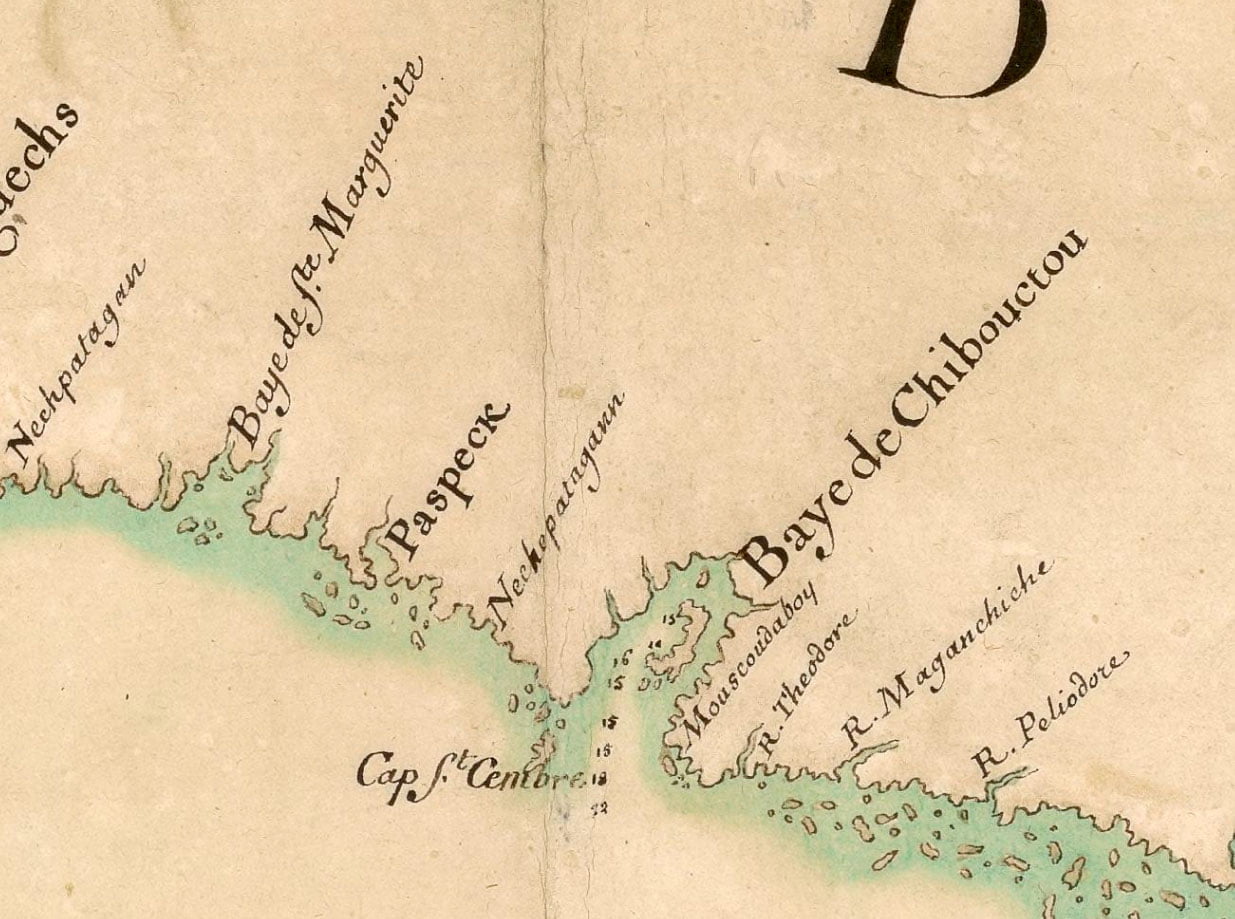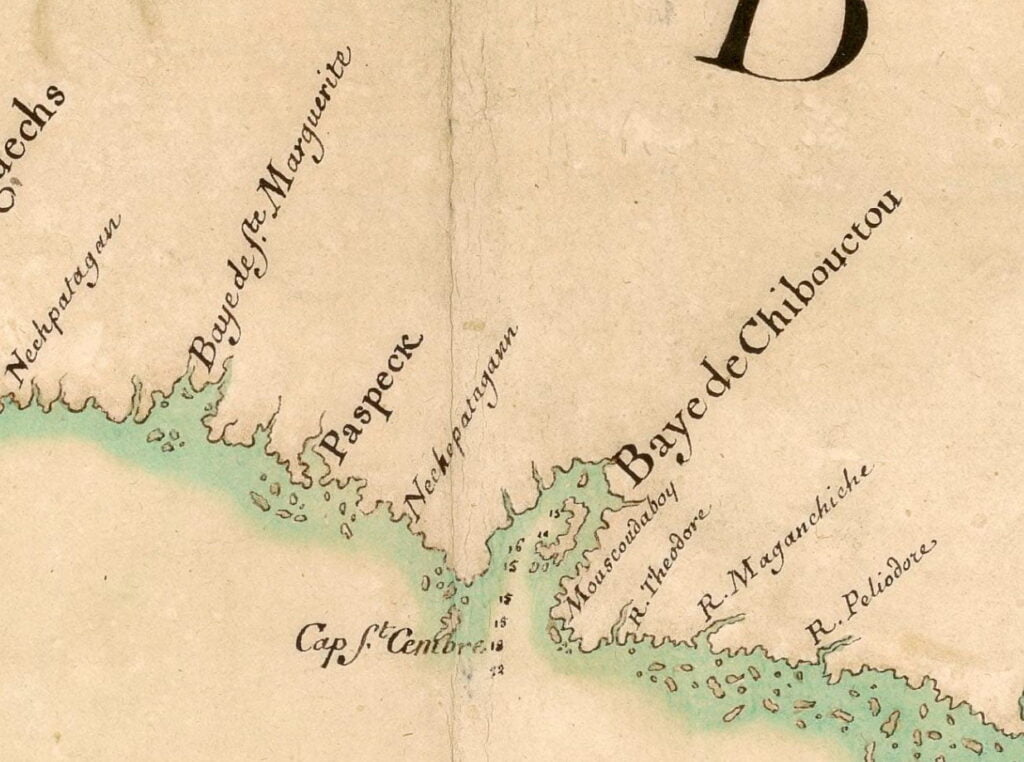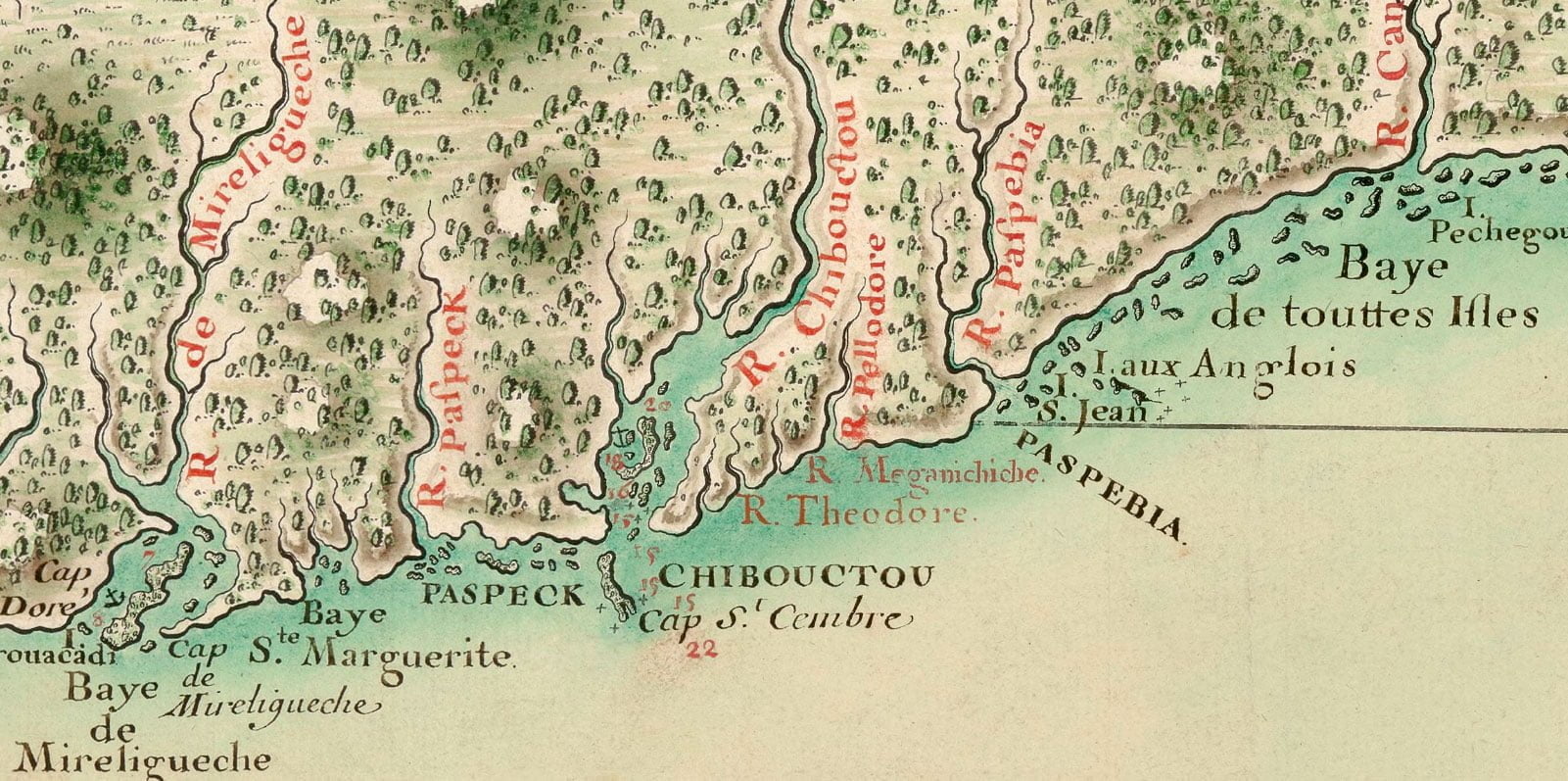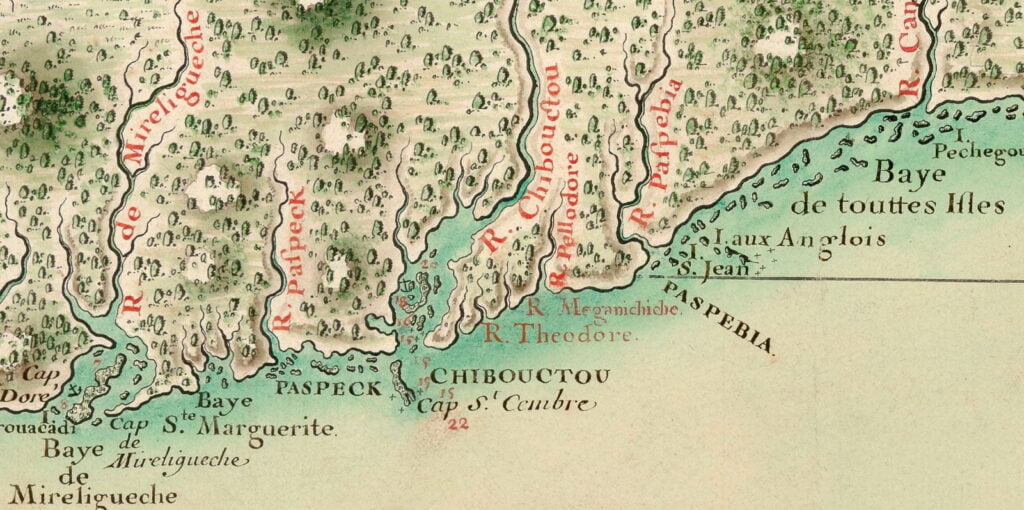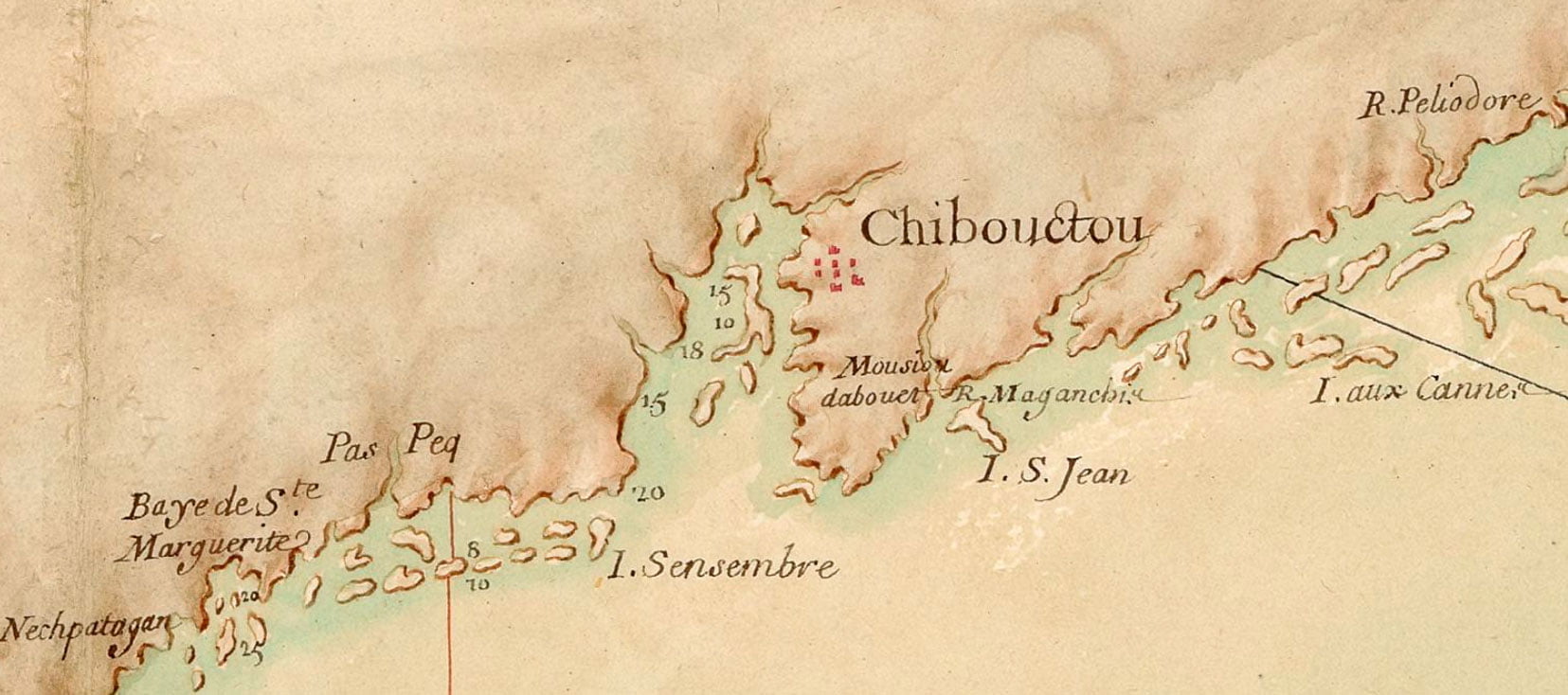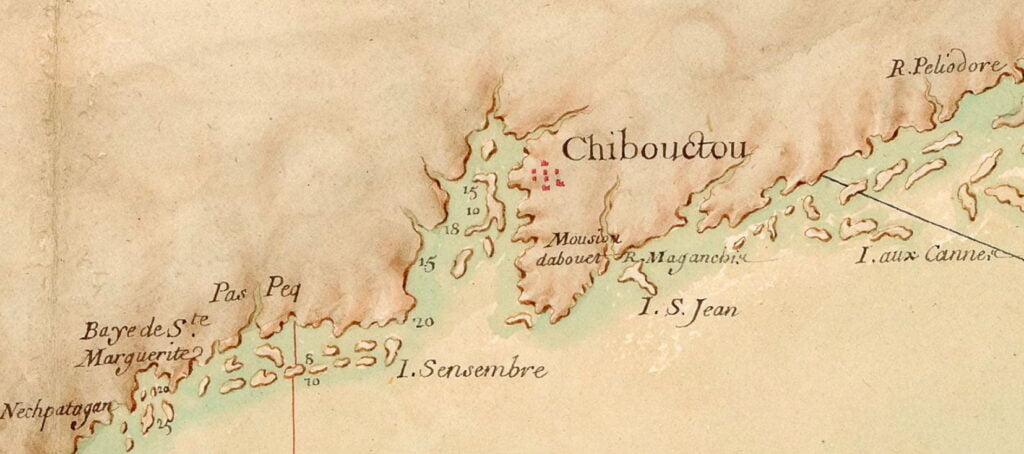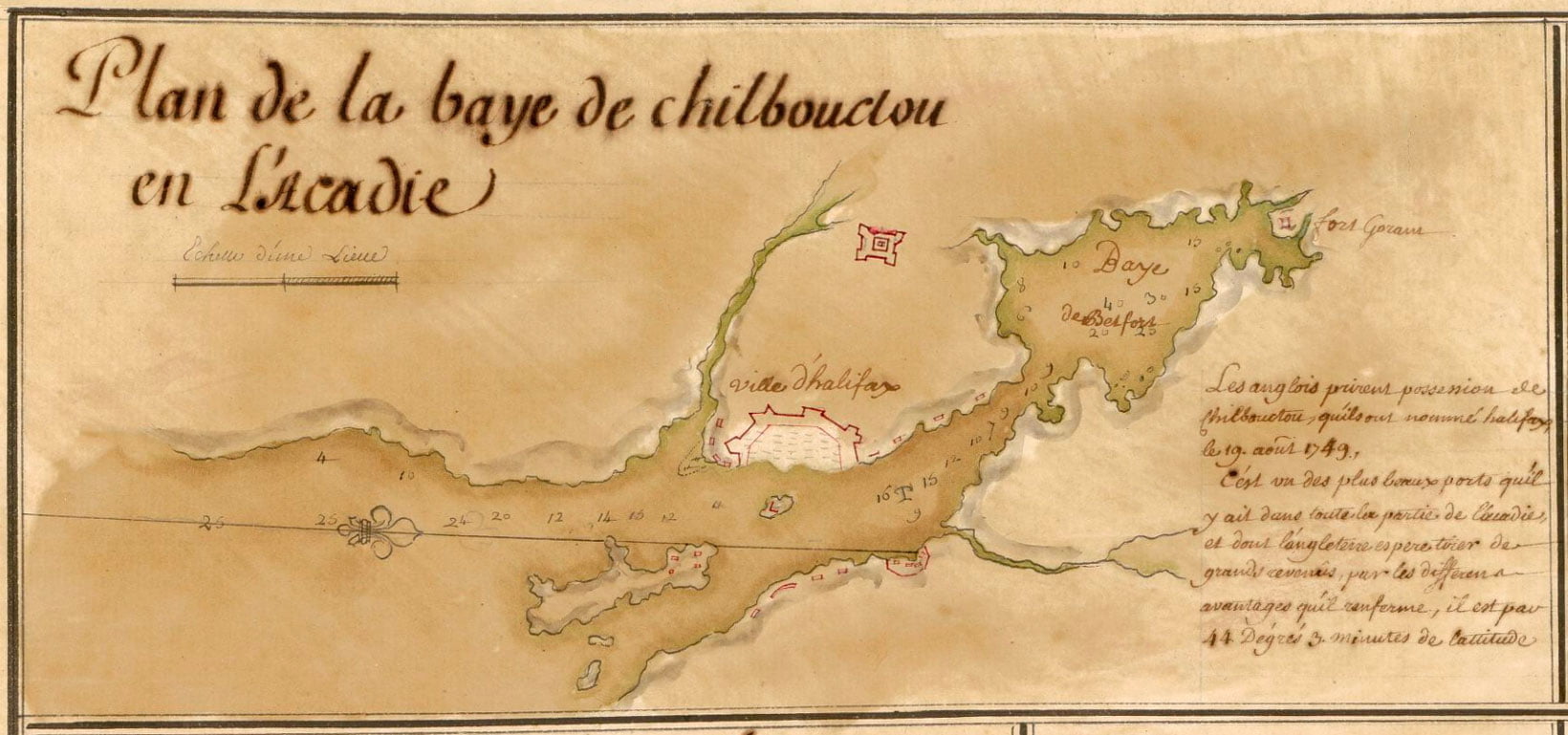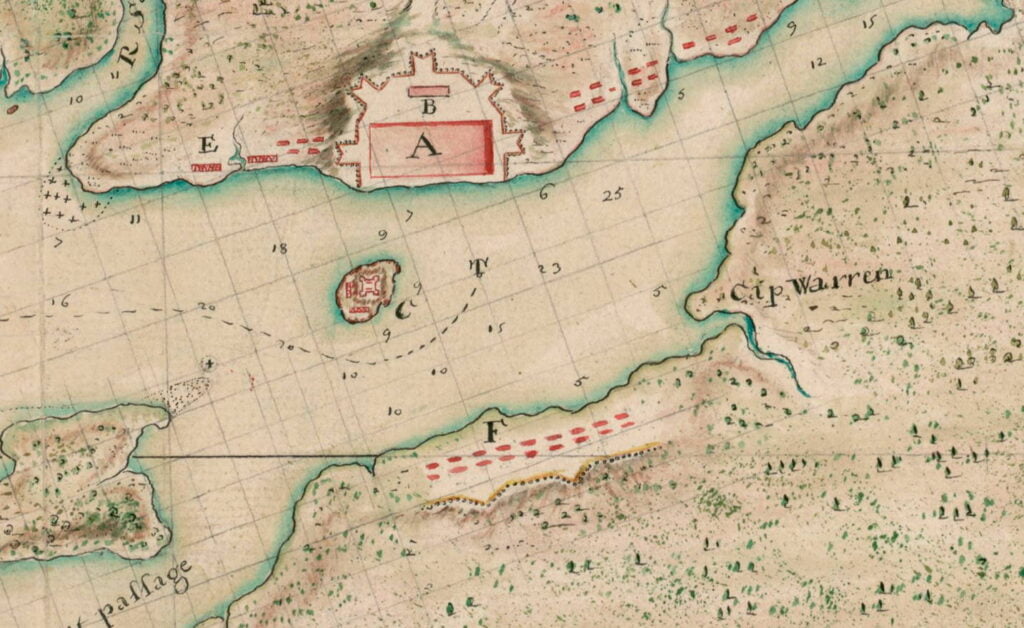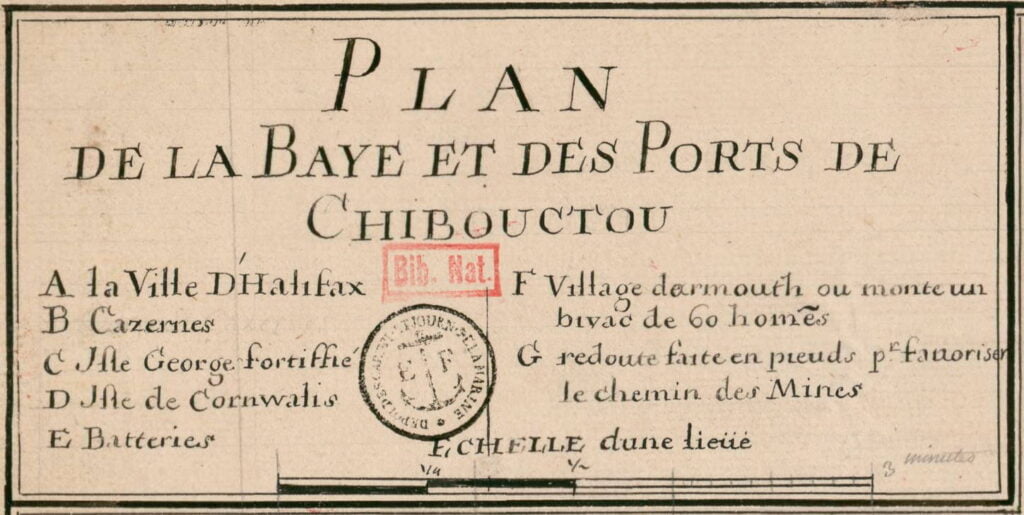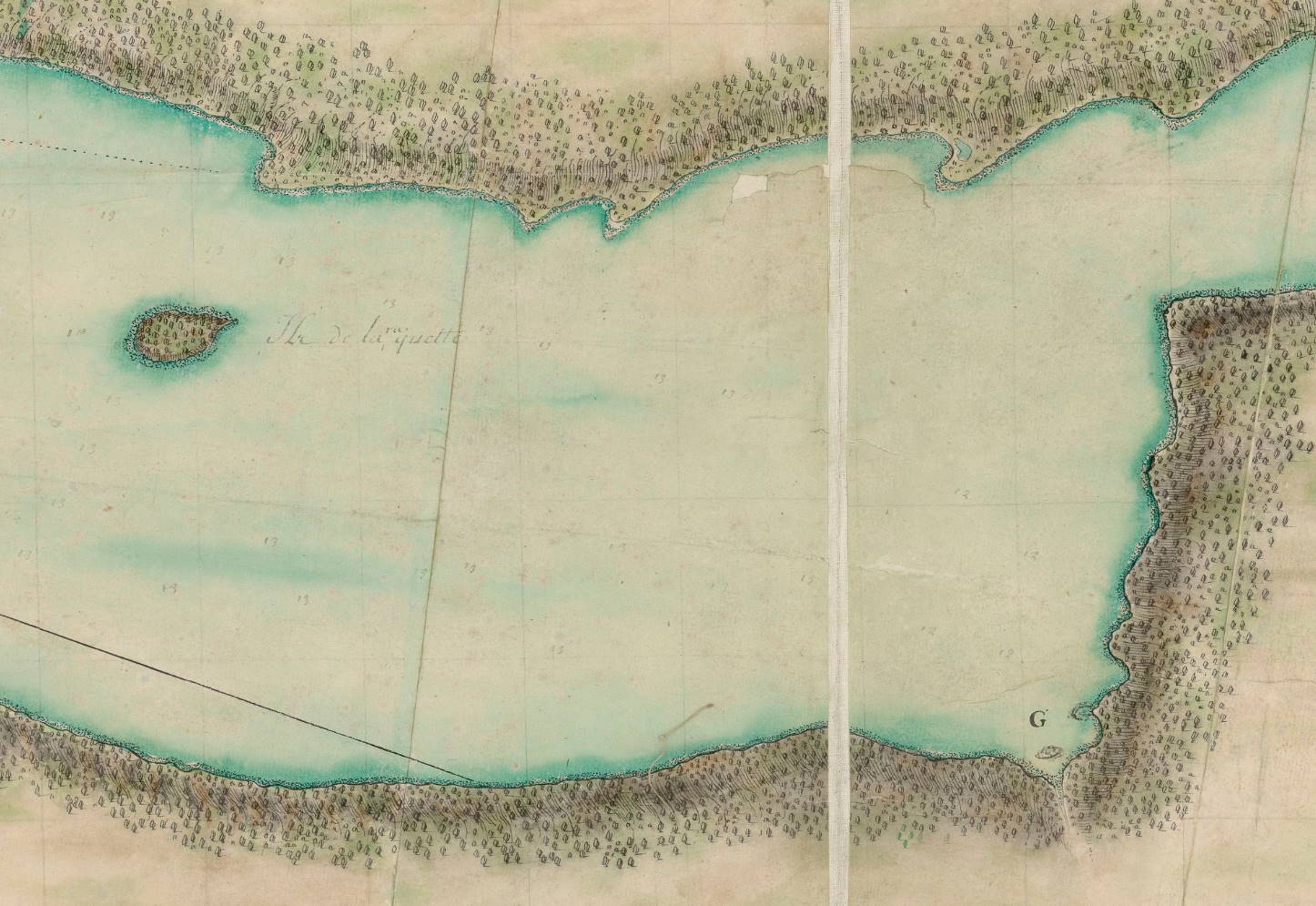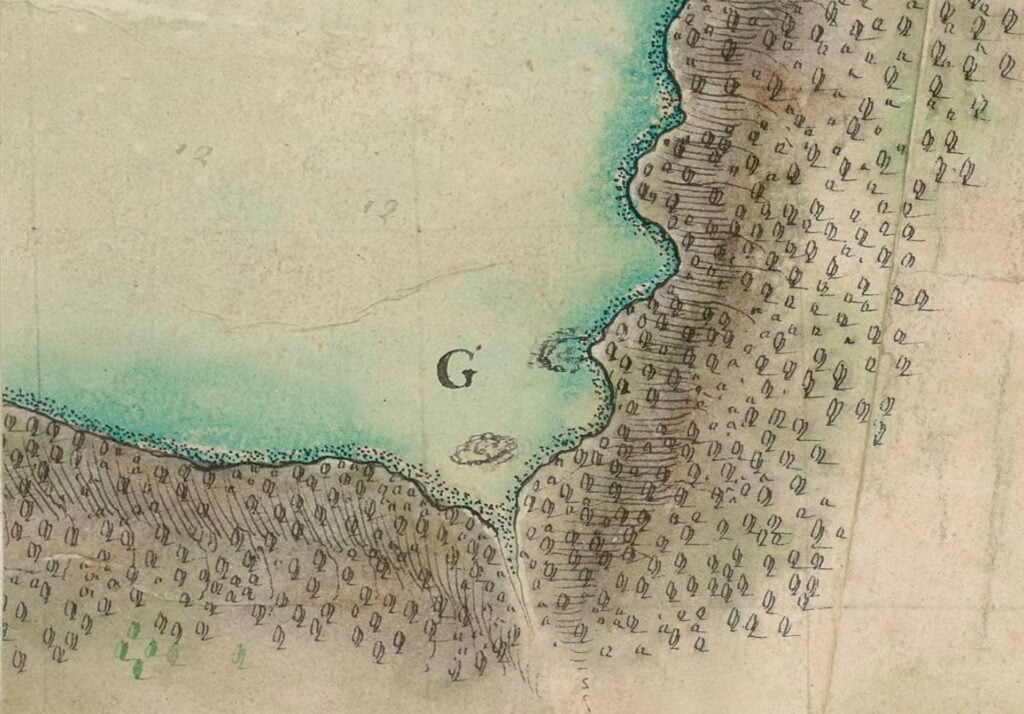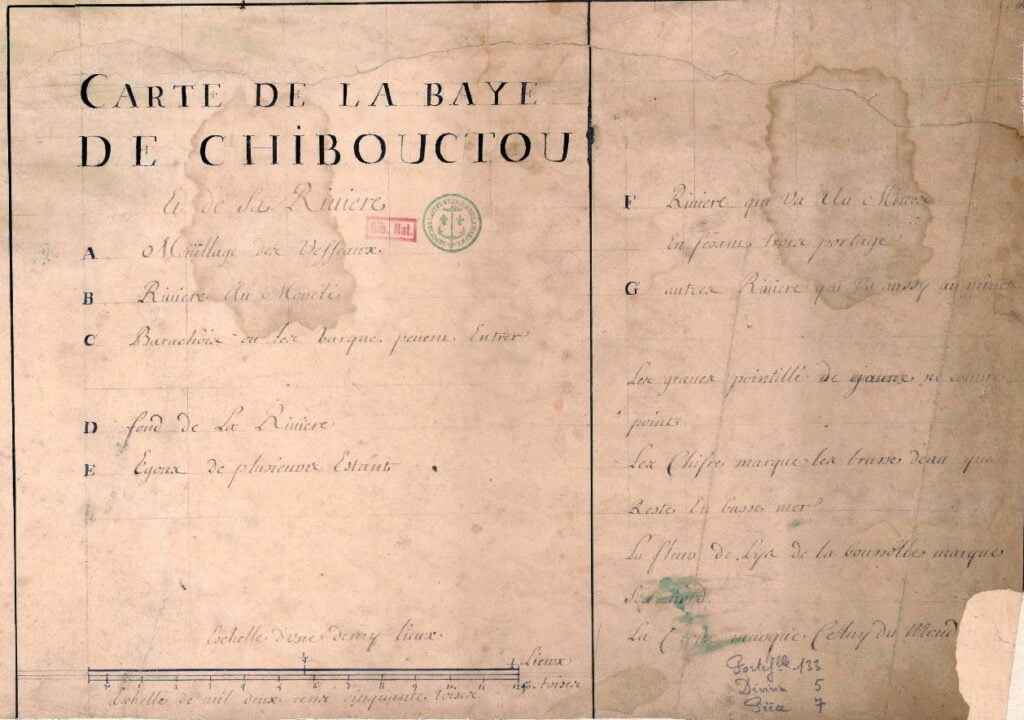
An incredibly detailed map, again showing Chibouctou on the Dartmouth side. Mcnabs Island and George’s are fairly easy to spot for those who’ve seen them on a map before. Perhaps the hatchings next to the seven buildings is meant to represent the “1/2 acre of improved land” that de Gargas notes in his 1687-1688 census of Acadie (including Chibouctou).

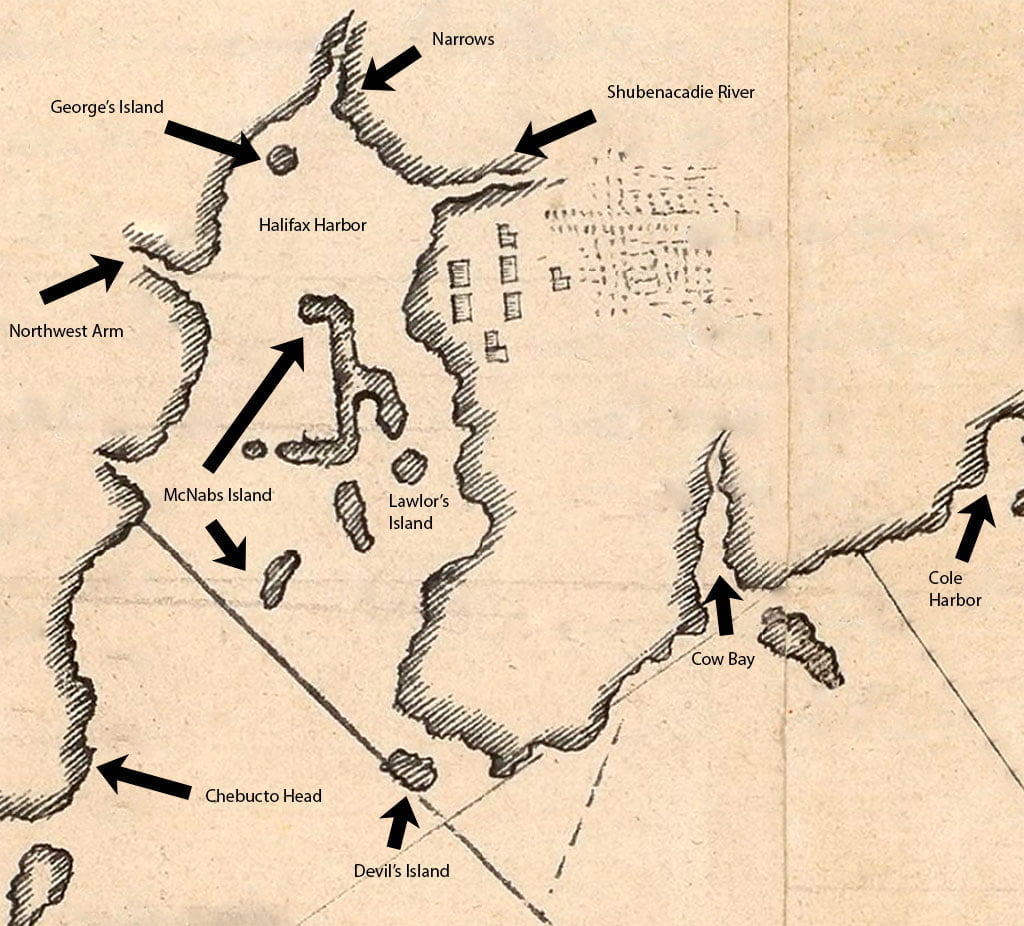
I have attempted to transcribe it as best as I can, being mostly unfamiliar with French, certainly the 17th/18th century variety. Following that is my attempt at a translation, thanks to Google Translate along with the ARTFL project at the University of Chicago.
My reading of a word or words I’m not familiar with will be in brackets, with what I think it means in context located previous to the brackets in italics. Example (as seen below): closely to (extremely tidy). I wasn’t sure at first if the text spanned both sides of the harbor but I’m assuming it does since it seems to make more sense. If anyone has a better read of this, please let me know.
“Le Port de Chibouctou la plus belle recoinissance du monde est celle du port de chibouctou par la montagne SenSembre qui estant fort haute en est dautant plus facille adistinquer. Son entree est nord 1/4 nord est et sud 1/4 ouest. Il faut extrement ranger la coste du ouest. Jusques a ce que vous ayes ouvert deux petits islets en maniere de grave qui tienne arajere grand isle que vous howees apres quoy vous ales moniller a une demie portee de canondeldits. Islets nord et sud d’une petite isle toute ronde qui pariott au found de la baye. Pour ceux qui viennent du coste du ouest et qui veulenyt donner. Dans Chibouctou il fait bien qui le donne de garde d’aproacher de l’isle SenSembre accouse des roches et basses soundres qui sont a lentour de cette isle a un lieue et demie ou deux , la pesche est fort bonne partout a l’entree”
“The Port of Chibouctou
The most beautiful view (recognition) in the world is that of the port of Chibouctou from (by) the Sambro (SenSembre) mountain which, being very high, is all the more easy to distinguish.
Its entrance is north 1/4 north east and south 1/4 west.
You must adhere closely to (extremely tidy) the western coast until you see (have opened) two small islets in a grave manner which hold a large isle which you ?? (howees?) after which you go up to them at half a reach of ?? (cannondeldits?) islets north and south of a small isle all round which ?? (pariott?) at the bottom of the bay.
For those who come from the west coast and who want to enter (give in) Chibouctou it is good who gives him the guard to approach from the island Sambro (SenSembre). Watch out for (accommodate) rocks and low soundings (soundres) which are around this island at a league and a half or two. The fishing is very good everywhere at the entrance”
“Carte de la coste de l’Acadie” La Borde, Jean-Benjamin de. 17?? https://gallica.bnf.fr/ark:/12148/btv1b53089980h
See also:


